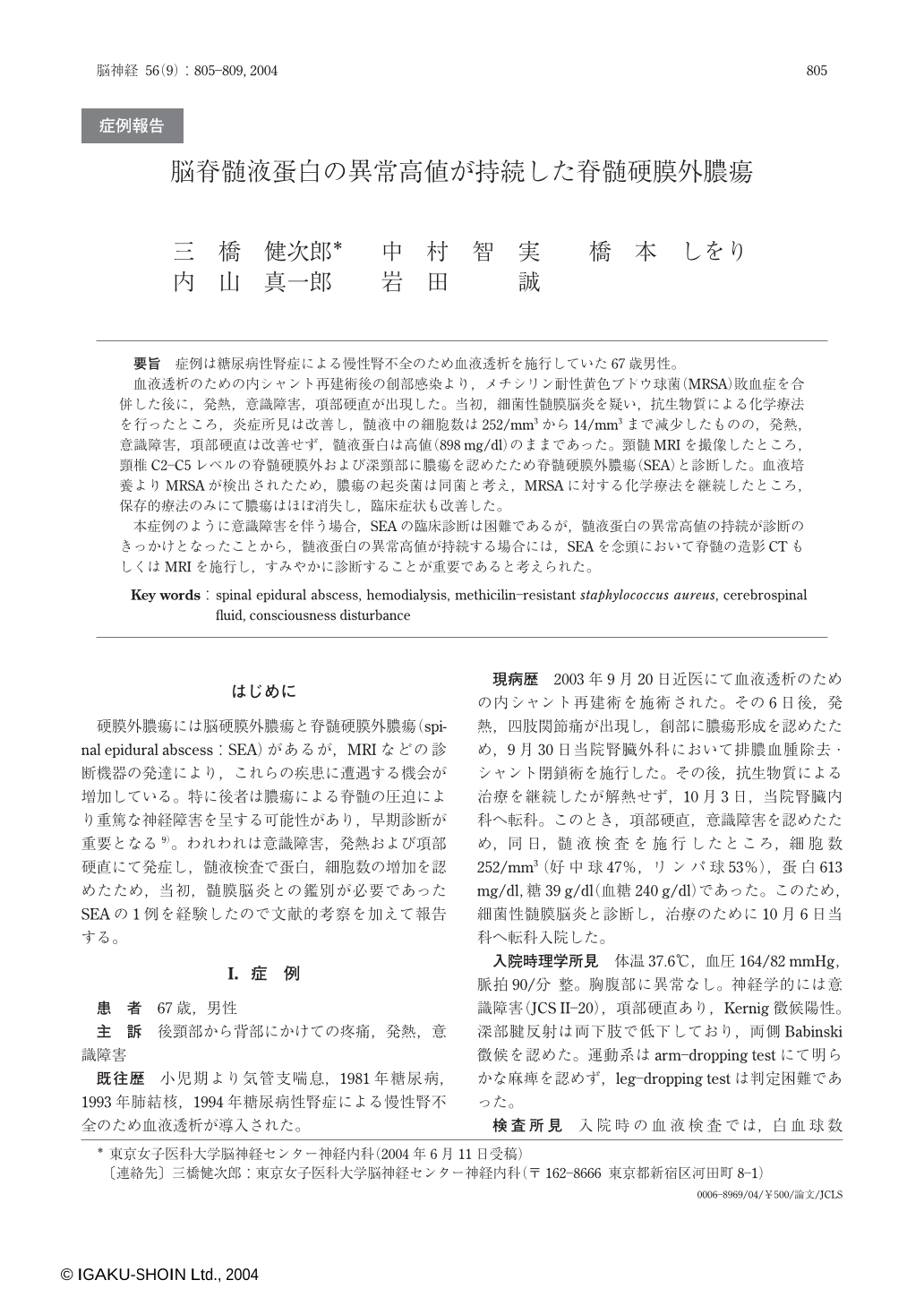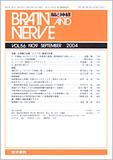Japanese
English
- 有料閲覧
- Abstract 文献概要
- 1ページ目 Look Inside
要旨 症例は糖尿病性腎症による慢性腎不全のため血液透析を施行していた67歳男性。
血液透析のための内シャント再建術後の創部感染より,メチシリン耐性黄色ブドウ球菌(MRSA)敗血症を合併した後に,発熱,意識障害,項部硬直が出現した。当初,細菌性髄膜脳炎を疑い,抗生物質による化学療法を行ったところ,炎症所見は改善し,髄液中の細胞数は252/mm3から14/mm3まで減少したものの,発熱,意識障害,項部硬直は改善せず,髄液蛋白は高値(898mg/dl)のままであった。頸髄MRIを撮像したところ,頸椎C2-C5レベルの脊髄硬膜外および深頸部に膿瘍を認めたため脊髄硬膜外膿瘍(SEA)と診断した。血液培養よりMRSAが検出されたため,膿瘍の起炎菌は同菌と考え,MRSAに対する化学療法を継続したところ,保存的療法のみにて膿瘍はほぼ消失し,臨床症状も改善した。
本症例のように意識障害を伴う場合,SEAの臨床診断は困難であるが,髄液蛋白の異常高値の持続が診断のきっかけとなったことから,髄液蛋白の異常高値が持続する場合には,SEAを念頭において脊髄の造影CTもしくはMRIを施行し,すみやかに診断することが重要であると考えられた。
A 67-year-old man under hemodialysis treatment developed neck stiffness, fever and conscious disturbances. The patient was infected with Methicilin-resistant Staphylococcus aureus(MRSA) sepsis caused by an infection on a dialysis shunt. On admission, he was diagnosed with bacterial meningoencephalitis and underwent a series of antibiotic chemotherapies. The treatment brought cell count in the cerebrospinal fluid to a subnormal level but his clinical status did not improve. The patient continued to have high level of cerebrospinal fluid protein(898mg/dl). Cervical MRI demonstrated two abscesses deep in the neck as well as in the epidural region of the cervical spinal cord, from C2 to C5 vertebral levels. Based on these findings, spinal epidural abscess(SEA)was diagnosed.
Intensive antibiotic chemotherapy especially targeted for MRSA could eradicate abscesses and improve clinical status. However, persistent high protein level in the cerebrospinal fluid could suggest SEA.
(Received : June 11, 2004)

Copyright © 2004, Igaku-Shoin Ltd. All rights reserved.


